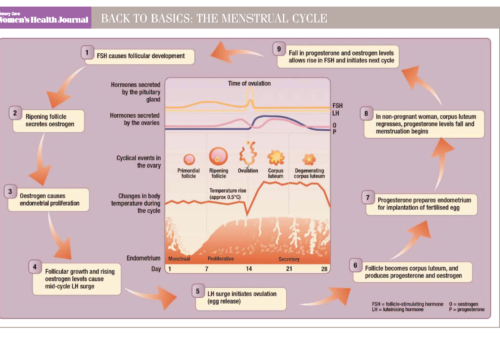A consultation in which a woman reveals a sexual problem can be challenging for her GP or practice nurse. But a sympathetic and systematic approach to history and examination usually reveals the likely source of the problem and the right approach to appropriate treatment.
Heavy menstrual bleeding: no need for hang-ups in primary care
Clinical guidelines and technological advances mean that most women with heavy menstrual bleeding (HMB) could be managed outside hospital. One primary care trust has developed a patient pathway, based on a unique primary care service that offers hysteroscopic diagnostic and treatment procedures, including endometrial ablation under local anaesthesia.
Endometriosis
Endometrial ablation: the right choice for the right patient
p>About one in five women suffers from reduced quality of life due to heavy menstrual bleeding (HMB). Many patients choose and respond to first-line treatment, but for others endometrial ablation may be a more appropriate option. The author discusses patient selection, and advises on post-discharge management in primary care.
More than a headache: managing migraine in women
Migraine is over twice as common in women as in men. In most cases, management is identical regardless of the patient’s gender, but there are a number of additional issues to consider when managing women presenting with this debilitating condition.
Back to Basics: The menstrual cycle
HRT in the balance: weighing the risks and benefits
Hormone replacement therapy (HRT) remains the gold-standard treatment for menopausal symptoms, but it has been suggested that its risks outweigh its benefits. Subsequent careful analysis of the evidence has, however, led to a more balanced consensus to help GPs and practice nurses advise women about their choices.
Beating bacterial vaginosis
Bacterial vaginosis (BV) is a common presenting problem in primary care. Several treatments are available, but relapse is very common. This article considers the diagnosis and management of BV and suggests some possible strategies when women return with recurrent symptoms.
Emergency contraception for the under-16s
Dealing with the sexual health of minors is a source of great anxiety for many health professionals. There can be great confusion about legal issues, confidentiality and worries about child protection. But it is possible for health professionals to maintain a non-judgemental approach that balances legal obligations with young people’s confidentiality and sexual health.
Endometriosis: the path to diagnosis in primary care
Although endometriosis is a common presenting problem, patients may have to wait several years for a diagnosis. The condition can be difficult to identify, but a careful history and examination help to ensure that women with endometriosis receive appropriate treatment.
The contraceptive implant
No tears? Taking action after obstetric trauma
After vaginal delivery, most perineal tears heal with few long-term sequelae, but more extensive tears can have significant implications for continence and quality of life. Since affected women may confide in their GP or practice nurse, it is important to be aware of new developments in the assessment and management of obstetric anal sphincter injuries.






















